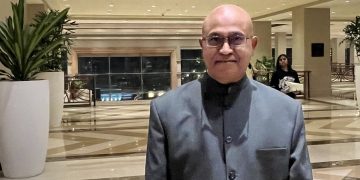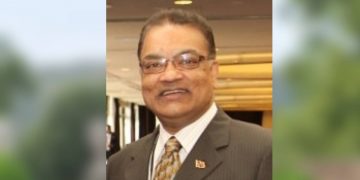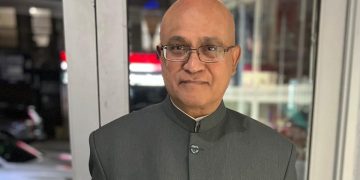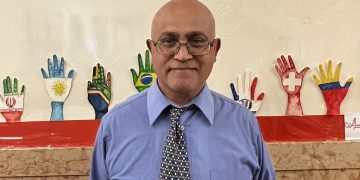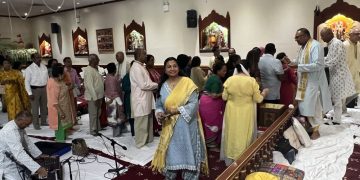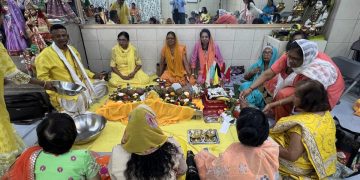The Seedas Sadhu statue at the Temple in the Sea in Waterloo was recently re-painted by Neville Lennard, a painter and artist from St Augustine. This is an annual event done in the month of May but this year there was the urgent need for a make-over and it was once again efficiently executed by Neville Lennard.
The cost of re-painting and enhancing the statue was underwritten by Dr. Roodal Moonilal. When I shared the new image of the Sadhu and requested friends to make financial donations towards the cost of the project, Dr. Moonilal agreed to pay the full sum. The Sangh welcomes this generosity of Dr. Moonilal and would continue to work toward enhancing the perimeter of the base. This project is being undertaken in collaboration with the Couuva-Tabaquite-Talparo Regional Corporation (CTTRC).
The Seedas Sadhu Statue was a project of the Hindu Seva Sangh in collaboration with the CTTRC, the Waterloo Community Group and members of the Sadhu family. The Hindu Seva Sangh (Sangh) led by the indomitable Haripersad Harikissoon and the late Mungal Chattergoon took the decision to build the statue after many public figures were hovering over the dilapidated mandir promising much but doing little except shooting pictures with their cameras.
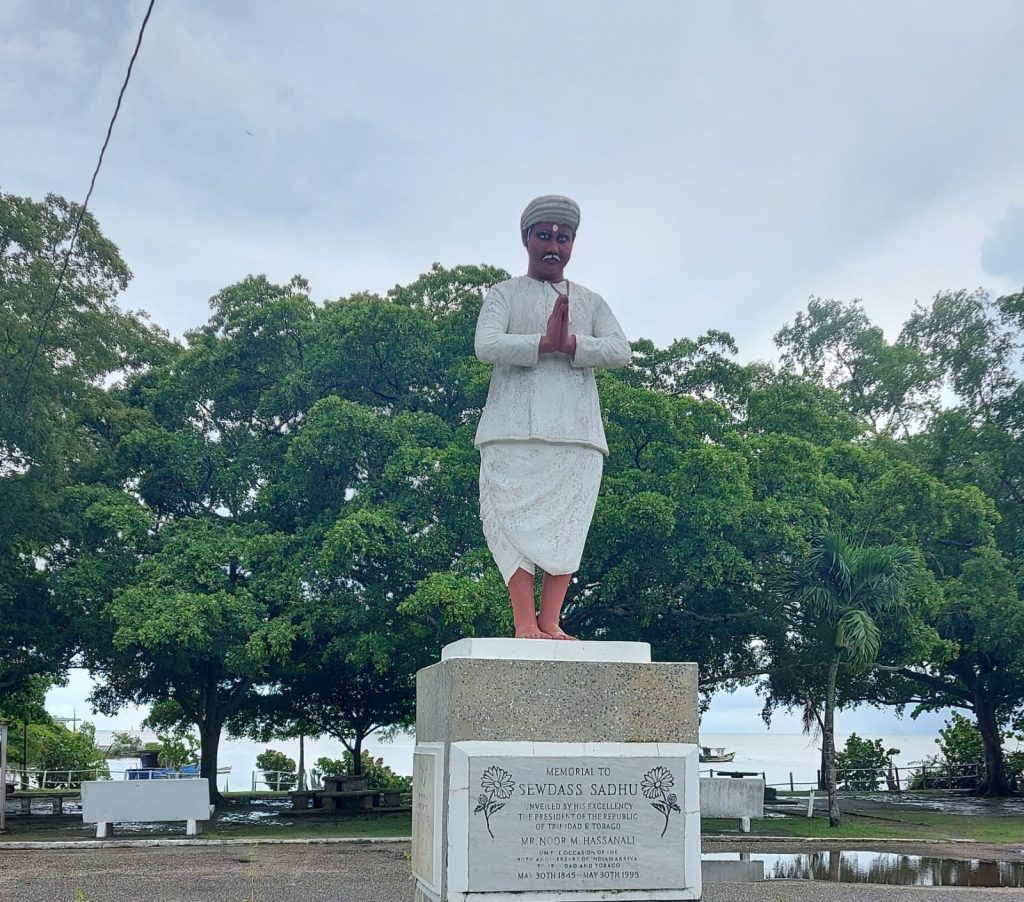
It was with this background that the Sangh took the decision to lay the foundation stone in 1992 with President Noor Hassanali unveiling the statue to the public the following year. It was this statue that inspired the reconstruction of the mandir and the resurrecting of the legacy of the Sadhu of Waterloo.
Today the statue of the Sadhu along with the Temple in the Sea, the Dattatrya Mandir, the Hanuman Murti and the Indo-Caribbean Museum has made Waterloo the most active tourist hub for Indian culture in the country with scores of tourists visiting daily.
Dr. Moonilal is much aware of the work of the Hindu Seva Sangh in youth development and the mobilization of the community to commemorate the anniversary of Indian Arrival Day in Trinidad. But one cannot forget the role Dr. Moonilal played in finding a home for the Sundar Popo statue that is now located opposite his constituency office in Debe. Two years after the statue was built the Sundar Popo Monument Committee went knocking on the doors of government officials for a parcel of land to locate the statue but to no avail. It was the coming to power of the People’s Partnership and the intervention of Dr. Moonilal that immediately had the statue erected where it stands today in Debe.

These acts of Dr. Moonilal only demonstrate that he understands the value of culture and its role in giving anchor to man. When individuals lose their culture and identity, they are no more than jetsam and flotsams washed up by the waves of the sea. Such individuals have no place in the world except to await death. The reality is that it takes much more than an MBA or doctorate to survive and flourish in the world.
Seedas Sadhu is a revolutionary. His first kutiya was demolished by the sugar estate and he was fined and jailed for trespassing on private property. Never deterred from fulfilling his mission, the Sadhu took the decision to build in the sea that ‘no man can claim.’ With a bicycle, he transported gravel and cement in buckets daily until the mandir was finally erected and opened to the public. This persistence of the Sadhu in the face of religious persecution is an event of epic proportion, an ideal story for the big screen.

All right-thinking individuals who have a sense of cultural identity would understand the value of the Sadhu and his legacy. This resistance of our Sadhu must be told to all freedom loving people of this world, and I am happy that individuals like Dr. Roodal Moonilal, MP Ravi Ratiram and Alderman Venosh Maharaj and a host of others can stand together to ensure that the legacy of the Sadhu continues to inspire humanity.













